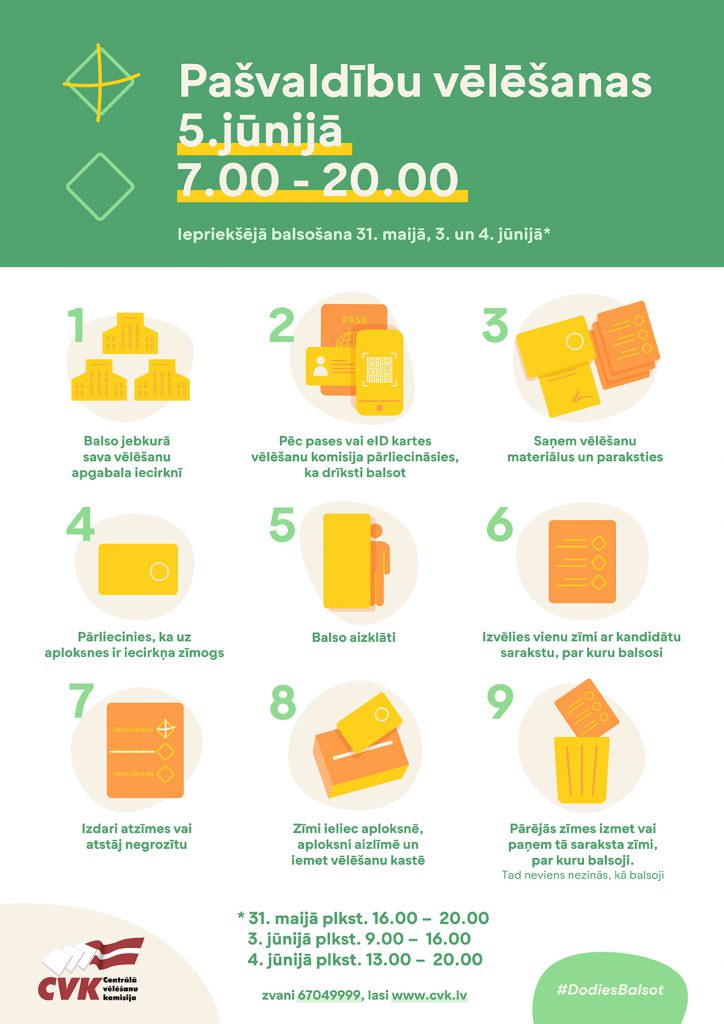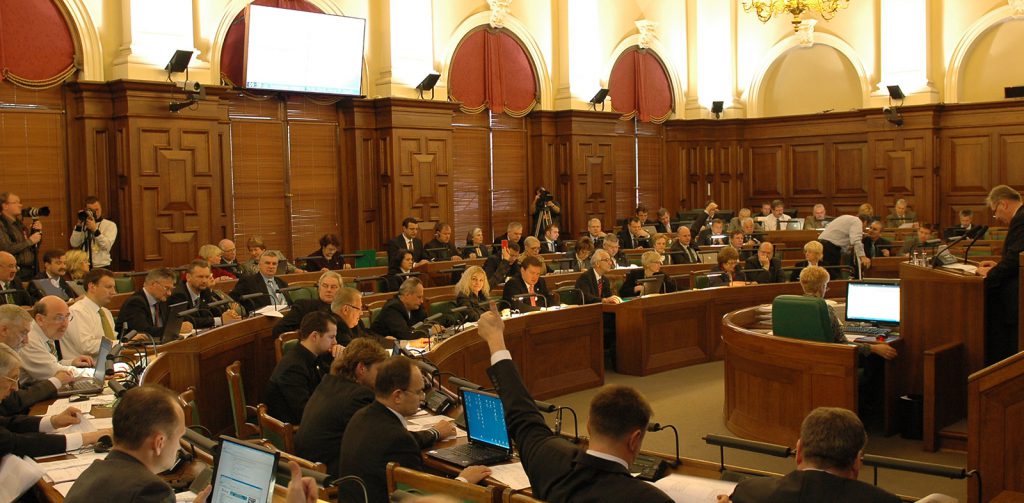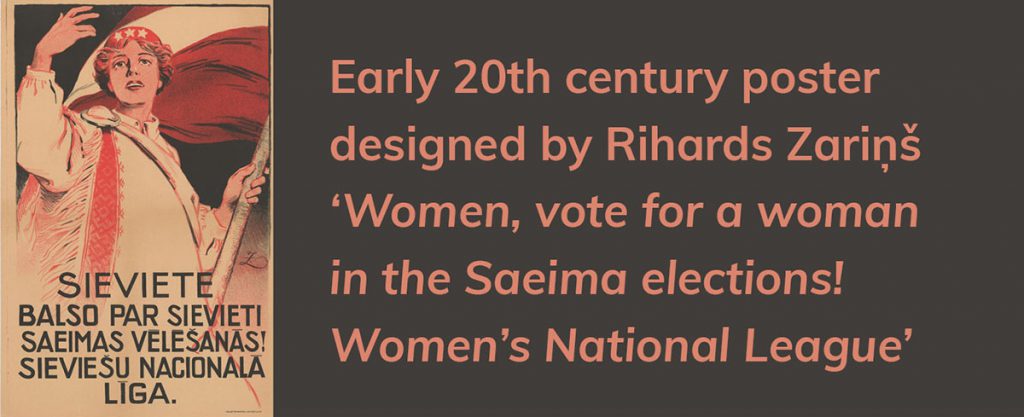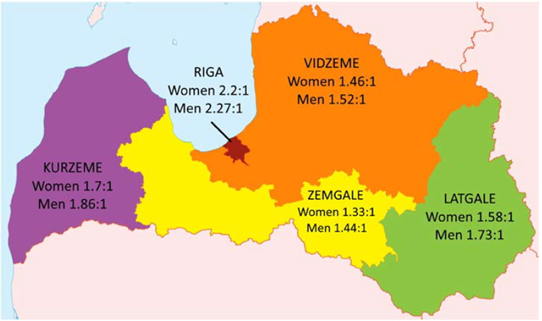Candidate lists in the 2021 local elections in Latvia contain only 38.6% women. Laura Dean argues that Latvia is unlikely to improve women’s representation in its municipal elections unless Latvian voters adopt preference voting, and mark with a 'plus' women candidates on party lists
On 5 June 2021, Latvian voters go to the polls for local elections in all municipalities except the capital, Rīga. In 2017, there were 118 municipal councils and 1,554 seats. In 2021, municipal reforms prompted a 56% drop, to 41 municipal councils and 683 seats. Similarly, the percentage of women holding seats at local level decreased from 45.4% in 2015 to 24.4% in 2020.
The number of women candidates on party lists is low, at 38.6%. If Latvian voters want more women in local council seats, preference voting is more important than ever in this municipal election.
Latvia has a unique system of preference voting. Voters can 'plus' and 'minus' candidates, a process that reinforces the bias of political elites who could place women lower on party lists.

This voting procedure graphic from Latvia's Central Election Commission shows how preference voting works.
In step 6, voters choose the list of candidates they support.
In step 7, voters can mark with a + the specific candidates they support, delete names of the candidates they do not support, or choose to leave the ballot unchanged.
My study in East European Politics explores these preference-voting dynamics in the 2018 and 2014 national elections. Voters used preference voting to disadvantage female candidates in the 2014 election. In the 2018 elections, this dynamic changed, significantly improving gender equality in the legislature.
This means that despite only a small percentage of women on lists in the forthcoming municipal elections, Latvian voters can 'plus' women candidates to close the growing gender gap in local elections.
Latvian voters can 'plus' women candidates to close the growing gender gap in local elections
You might imagine that a higher proportion of women exists at the lowest political levels. However, recent research shows how local representation is similar to analogous levels of government in, for example, the United States.
Women’s representation at the local level in Latvia has been decreasing over time. But there was a significant increase at national level in 2018. In that election, women’s representation in parliament increased from 18% to 31%.
Ranked choice or preferential voting dynamics among the Latvian population can reveal whether female candidates incurred an electoral penalty, discriminating against women.
Latvia has no gender quotas mandated in the constitution, no institutional mechanisms to increase women’s participation, and no law to ensure gender equality in politics. The country ranks sixth in Eastern Europe for women’s representation, behind North Macedonia, Serbia, Croatia, Albania, and Belarus.
Latvia has no gender quotas mandated in the constitution, and no law to ensure gender equality in politics
In the twelfth Saeima (Latvian parliament), 24 seats were decided by preferential voting. This influenced the gender balance, making male candidates more likely than female candidates to be voted in and out. Nineteen men and five women were voted into seats. Fourteen men and ten women were voted out of party lists.
Consequently, preferential voting meant that male candidates replaced women in the 2014 election. Men also had more positive preferences to negative preferences, with a ratio of 1.29:1 (1,265,047 pluses to 979,655 minuses). Female candidates, on the other hand, were more likely to receive a minus compared to male candidates, with a ratio of .96:1 (428,463 pluses to 448,401 minuses).

In the 2018 election, women constituted 31.8% of candidates on political party lists, down from 33% in 2014. Female candidates in 2018 had a 6.7% success rate, compared with 4.7% in 2014. Despite the smaller percentage of female candidates, there were more female candidates – 464 – overall in 2018, and 997 men. So even though the percentage of female candidates was lower than in 2014, 82 more women ran for parliament in 2018.

In the 2018 election, preferential voting decided 28 seats in the Saeima. Again, the electorate was more likely to vote men than women in and out. Twenty men and eight women won seats by preferential voting. Twenty-three men but only five women were voted down, and therefore out of contention, on party lists. This is half the number of women voted out of seats in 2014, so women were less likely to be voted out in 2018.
Compared with 2014, in the 2018 election male and female candidates had more positive preferences than negative preferences across all regions of Latvia. In fact, the proportion of pluses to minuses for men (1.85:1) and women (1.78:1) was similar. This despite the fact that men received more preferences overall (1,213,515 pluses to 657,168 minuses) than women (492,784 pluses to 276,329 minuses).
We can see, therefore, that there was a substantial change in the electorate's preferences between 2014 and 2018.

Election law amendments in 2009 required candidates to run in only one region. At first, this increased men's top positions on party lists. By 2018, however, the amendments had spurred the highest number of female candidates in Latvian history to run for office.
In the 2018 election there were more female candidates, along with changes in preferential voting dynamics. This resulted in more women receiving parliamentary mandates than in previous elections.
Election law amendments in 2009 spurred the highest number of female candidates in Latvian history to run for office in 2018
I carried out a statistical comparison of the influence of gender on preference voting. My comparison revealed that female candidates had a negative relationship with cumulative preference voting outcomes in 2014. In 2018, however, this relationship was positive.
Women were less likely to receive minuses in both elections. But the 2014 results suggest this relationship was overwhelmingly negative, and statistically significant.

The map above shows how in 2018, women received positive preferences in every region of Latvia. Compare this with 2014, when four of the five regions posted more negative preferences.
This demonstrates that Latvian voters do not show consistent bias against female candidates. There is a change from mostly negative preferences for women in 2014 to mostly positive preferences in 2018. Thus, preferential voting could continue to impact women’s representation in the forthcoming municipal elections.
Voters can close the gender gap. To make this happen, however, Latvian voters must consistently 'plus' women candidates in municipal and national elections.
If they do not, the positive preferences that led to historic gains in women's representation may not continue past the current parliament.
This blog is based on Laura's East European Politics article Striking out women: preferential voting and gender bias in Latvian Saeima elections